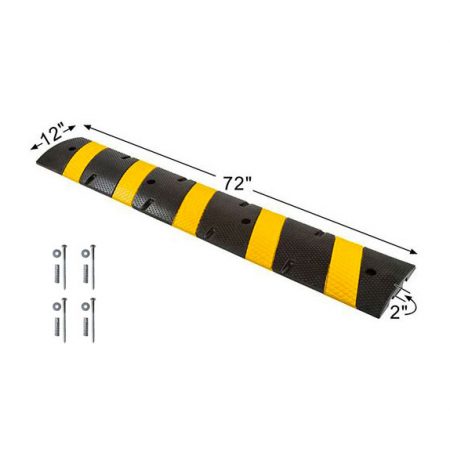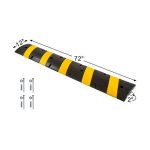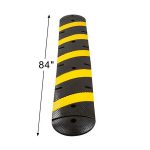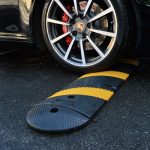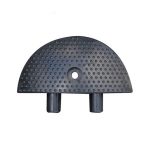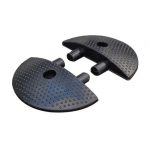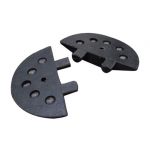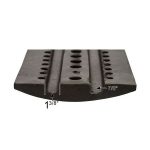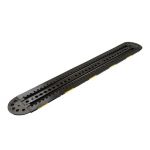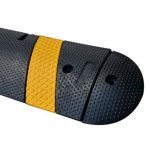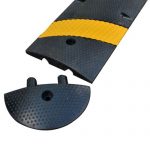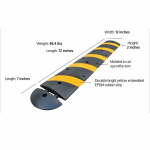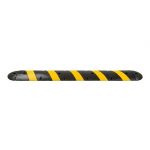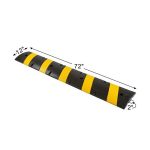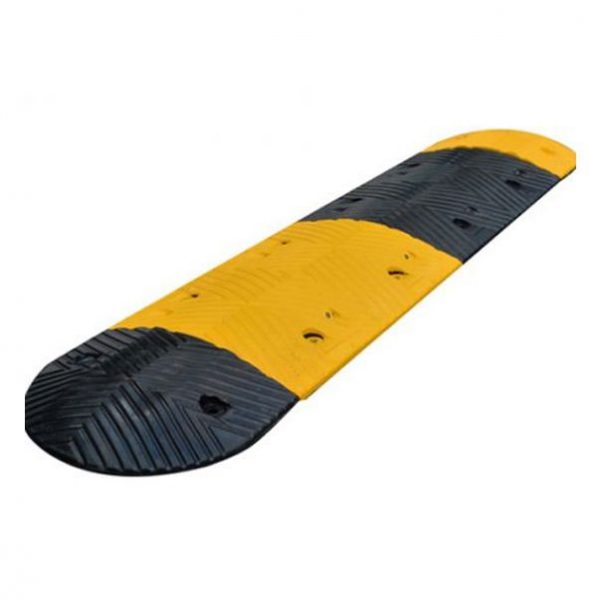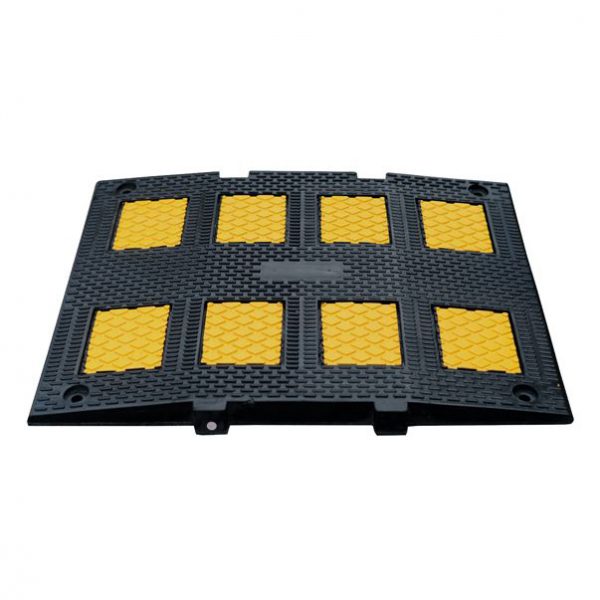Product Description
SPEED BUMPS FOR SALE
Standard Sizes
| SKU | Description | Length | Height | Width | Weight | Quantity 1- 49 | Quantity 50+ |
|---|---|---|---|---|---|---|---|
| SB206FT | 6 Ft Speed Bump (1) 6′ Section With no End Caps | 72″ | 2″ | 12″ | 48.40 | $74.98 | $68.50 |
| SB207FT | 7 Ft Speed Bump (1) 6′ Section + (2) End Caps | 86″ | 2″ | 12″ | 55.40 | $98.00 | $92.50 |
| SB213FT | Single Lane 12 Ft Speed Bump (2) 6′ Section With no End Caps | 144″ | 2″ | 12″ | 96.80 | $173.96 | $170.48 |
| SB219FT | Double lane 19 Ft Speed Bump (3) 6′ Section + (2) End Caps | 230″ | 2″ | 12″ | 152.20 | $285.94 | $280.22 |
| SB225FT | 25 Ft Speed Bump (4) 6′ Section + (2) End Caps | 302″ | 2″ | 12″ | 200.60 | $372.92 | $365.46 |
| SB2ECAP | End cap | 7″ | 2″ | 12″ | 3.50 | $12.50 | $12.50 |
For larger quantities please contact a representative for additional pricing discounts. 1-855-864-6281
Specifically designed to stop high speed traffic on streets and parking lots, Unimat rubber speed bumps are a smart solution to ensure a safe street and parking lot.
The rubber speed bumps are a smart investment since they don’t need any maintenance. Their rubber construction makes them last much longer than if they were made of other materials.
Use Unimat rubber speed bumps and take advantage of their outstanding features. They also have cat eye reflectors that allow them to be visible during night hours.
Features & Benefits of the rubber speed bumps
- Made of 100% recycled tire rubber, it is a flexible design; it fits on almost any highway surface to stop cars.
- Reflecting yellow ribbon.
- Cat Eye reflectors to optimize night vision and darkness vision.
- Pre-perforated for easy installing.
- Bottom with canals to help facilitate drainage, to set the wiring or street pipes.
- Our Speed bumps can be easily removed for storage or reinstalling.
- They can be used for temporary or permanent installation.
- Resistant to dampness, oil, temperature variations and ultraviolet rays.
- They won’t lose their shape, crack or get rotten.
- Flexible design allows them to adapt to inequalities of the road.
- Lightweight, they can be easily installed by only one person.
Speed bumps and speed humps are traffic calming devices designed to slow down drivers in certain areas. Speed bumps are made to slow drivers down to between 2 to 5 mph, while speed humps are designed to slow traffic on public roads such as schools. They are made of rubber and are durable and portable. You can find speed bumps and humps for sale online here.
Speed Bumps & Humps For Driveways & Parking Lots
There are several benefits of recycled plastic or rubber Speed Bumps and Speed Humps over regular and traditional asphalt or concrete bumps, and those specific benefits are:
- These speed bumps and humps are made out of 100% recycled material that contributes to the ecology.
- Thanks to their colored rubber material they never loose their color or brightness so you will never need to retouch the paint.
- Bumpers and humpers are light weight, easy to transport so it’s a simple one-person installation.
- Easy to remove for pavement maintenance or area maintenance, this helps to facilitate the job and eliminates time to every process.
- No maintenance needed.
- Effective costs because it has years of high performance with low maintenance. These low costs and low maintenance give the clients the opportunity to have a great product without affecting the company budget.
What’s the difference between a speed bump and a speed hump?
Speed Bumps are designed to improve pedestrian safety through slowing down vehicles in areas where slow speed is a must since it reduces the risk of accidents on residential street, driveways and parking lots. The average speed of a vehicle on a speed bump is between 2 to 5 mph.
Reinforce the stop signs in parking lots and roads and are made to slow down drivers to between 2 to 5 mph, this helps reducing accidents where you need to almost stop the vehicle in the area.
Speed Humps on the other hand, slow down vehicles to between 10 to 15 mph.
Slow traffic on public roads such as schools, hospitals, applies to where they need to reduce the speed but not stop a vehicle. Where emergency vehicles transit and they need to keep going. Industrial areas or areas with heavy truck traffic where high speeds can lead to an overturned vehicle or provoke an accident.
Yellow Recycled Plastic Speed Bumps
Our online store stocks several different lengths of speed bumps for sale from 6 to 25 inches for immediate shipment. You can combine bumps of different lengths to accommodate any width of parking lot or lane.
Choose from our wide variety of speed bumps. All Speed bumps have reflective yellow tape that help to increase safety in low light conditions.
Reflective Recycled Rubber Speed Bumps for sale
When we created our reflective recycled rubber speed bumps, we thought about creating an efficient product to improve the safety of pedestrians and motorists, that´s why we used the very best materials for manufacture and made sure we made the best shape and texture to improve its performance and endurance.
Our speed reducers are made of highly resistant recycled rubber with two installation holes and reflective yellow tapes that allow much greater visibility at any time of the day, while their one-piece construction notably increases their life time. The covers help for the drivers never notices that there is two parts of the Bump.
You can combine bumps of different lengths to accommodate any width of parking lot or lane.
Recycled Rubber Speed Humps for Sale
Being much gentler than speed bumps, emergency vehicles don’t need to slow down as much as they do with Speed Bumps maintaining the safety of the areas where they are installed. They are highly visible and reflective.
We are sure that either our Speed Bumps or our Speed Humps will exceed all your expectations of quality and durability.


 Asphalt
Asphalt Concrete
Concrete